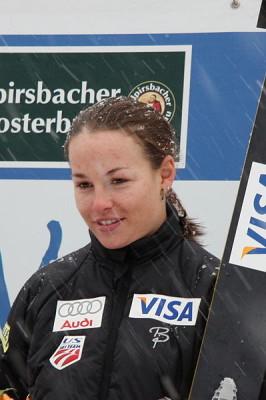“IT JUST MAKES me nauseous,” U.S. ski jumper Lindsey Van said last year. She was talking about her reaction to the highest-ranking ski official in her sport, Gian Franco Kaspar, explaining that letting women ski jump in the Olympics would be a health-hazard, too dangerous for women, potentially harming their uteruses and causing infertility. “Like,” she continued, “I kind of want to vomit. Like, really? I’m sorry, but my baby-making organs are on the inside. Men have an organ on the outside. So if it’s not safe for me jumping down, then my uterus is going to fall out, what about the organ on the outside of the body?”
Women’s struggle for inclusion in athletics has long included a battle against perceived notions of fragility and health. It’s not that sports aren’t dangerous—because sometimes they are, for both men and women—but it should be up to the athlete whether or not to participate.
Van’s disgust was no doubt also fueled by over a decade’s worth of fighting for the inclusion of the women’s ski jump in the Olympics. Ski jumping and Nordic combined, which features ski jumping and cross-country skiing, have been the only Winter Olympic events open only to men.
What draws an athlete to one particular sport over another is often a mysterious and personal experience.
At seven-years-old, Van watched towering jumps being built in her hometown of Salt Lake City, Utah, and later, after her first lesson, she announced to her parents, “That’s what I want to do. I want to go to the Olympics.”
The problem: Only male jumpers were allowed to compete in the Games. Officials would change their explanations over the years, from the standard false age-old health-related sacred baby-making dangers to the declaration that there weren’t enough elite women athletes for competition. (“We’ve never gotten a good answer,” Van explained. “And it’s always changing.”)
Van and others wondered whether the real holdup was the worry that it might make the sport look “less daring and macho,” especially considering women might “do as well or even better than some of the guys.” And more simply, Van said, “They don’t know how to deal with us quite yet.”
The struggle is reminiscent of the quest for women’s inclusion in long-distance track events, including the marathon, which wasn’t allowed at the Games until 1984. Endurance events, it’s now been proven, are among the competitions where women can give men a run for their money.
When the Olympics came to Van’s hometown in 2002, she wasn’t permitted to compete, but ironically she was the test-jumper for the men, to make sure the course was good enough.
At twenty-four, Van became the first Women’s World Ski Jumping Champion. Even though she out-jumped the men at the 2010 Vancouver Olympic venue, she was still denied the chance to perform at the Olympics.
The International Olympic Committee (IOC) Mission, as stated in the Olympic Charter, is to “…encourage and support the promotion of women in sport at all levels and in all structures with a view of implementing the principle of equality of men and women…”
Yet Van and her teammates missed out on lucrative endorsement deals contingent on Olympic inclusion, while the men racked up endorsements and ample financial support. She and her teammates traveled “like hobos,” and she continued to break records set by men. Her fight for Olympic inclusion ultimately took her to the Supreme Court of Canada with a gender-discrimination lawsuit against the Vancouver Organizing Committee in 2008. During her legal showdown, she called the IOC “the Taliban of the Olympics,” and said, “It’s like my future is in the hands of a bunch of old dudes.”
Van simply “would not go away,” and although she lost her lawsuit, the attention and embarrassment were enough for the IOC to announce the inclusion of the women’s ski jump in this year’s Sochi Olympics.
While men have three Olympic ski jumping events—the normal hill (80-100 meters high), large hill (120-130 meters) and the team event—for the Sochi Games, women will have just one, the normal hill. (Van’s specialty, where she would most excel, would be the large hill.)
“Fighting for women’s ski jumping wasn’t something I set out to do,” Van said. She, like female athletes in history, just wanted to compete in her sport. But then she found herself a reluctant advocate. “Hopefully,” she said, “I’ll leave the sport better off than I found it.”
The irony is that now that the sport is included in the Olympics, Van likely won’t medal. She is now twenty-nine, and whether she wins the first gold in her sport or not, she says she’ll be satisfied knowing that the barrier has been broken.
With four knee surgeries and a ruptured spleen in her past, she still thrives on the thrill of the ski jump. “You are up in the air,” she said, “and for a minute it’s as if you can fly. It’s a feeling like nothing else I’ve ever felt, and as soon as I land, I just want to go back up to the top and do it again.”




That uterus thing just won’t go away. As you point out, it was used to keep women out of long distance track/road events, at least into the early 80s.
Is there some kind of uterus-fear (or maybe it’s uterus-worship) among athletics officials? It’s hard to understand why hurdling and high jumping were considered uterus-safe, back in the day, but any running event longer than 3000 meters wasn’t. And now — amazing, amazing — ski jumping is another peril to that uterus.